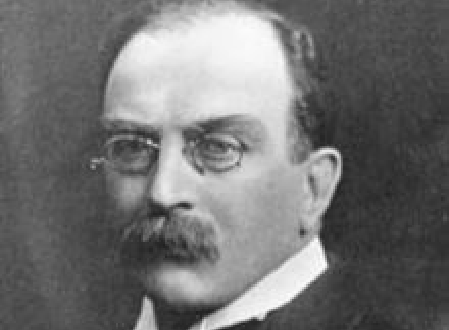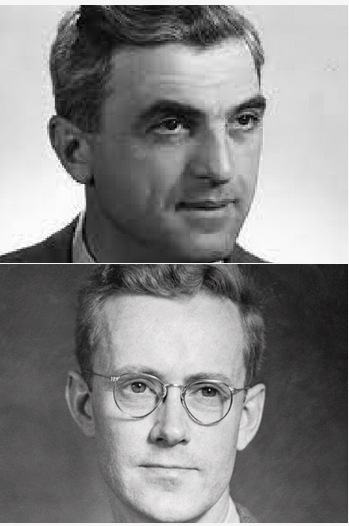Welcome to
mrimaster.com
We aspire to provide a valuable resource for everyone, be it an MRI professional, radiography student, radiologist, medical student, or simply a curious individual. Our aim is to deliver a user-friendly, comprehensive guide covering a wide range of practical MRI topics, including protocols and planning for over 138 examinations, 40+ artifacts, whole-body cross-sectional anatomy, MRI pathologies, and MRI physics, all accessible with a single click on our website.
MRI Protocol, Planning, Anatomy, Physics, and Artifacts in MRImaster
Our website presents an intuitive interface for seamless navigation, with user-friendly tabs conveniently positioned at the top of each page.Dive into our comprehensive “Planning” section, offering detailed explanations and visual aids to simplify MRI scan preparation for various body regions. Find tailored protocols and parameters for diverse scenarios, enhancing your MRI planning process. Explore the “Technical” section for guidance on parameter manipulation to achieve impeccable diagnostic scans, including detailed explanations of MRI scanning parameters like TR, TE, flip angle, ETL, bandwidth, slice thickness, SNR, SAR, resolution, and more.
Unlock the potential of our “Characterized Images” tab, granting access to typical images from different sequences (e.g., T1, T2, PD, STIR, FLAIR, T2*, 3D TSE, etc.). Gain insight into fundamental physics, principles, and applications. In the “Anatomy” section, labeled images offer a clear reference for comprehending MRI cross-sectional anatomy in various planes. Our “Pathology” section showcases distinctive features of specific pathologies captured by diverse imaging sequences. Lastly, we provide a dedicated “MRI Artifacts” section with strategies for correction, delivering comprehensive insights into this subject matter.

History of magnetic resonance imaging
The Romans were the first to discover magnets over 2000 years ago. Since then, our understanding of magnets has significantly advanced, leading to the development of various applications. One notable application is Magnetic Resonance Imaging (MRI).
Joseph Fourier

The origins of NMR (now known as MRI) trace back to the work of a French mathematician named Jean Baptiste Joseph Fourier (1768-1830). Fourier’s contributions to the field involved the development of a mathematical technique to study the transfer of heat between solid objects. This breakthrough eventually led to the advancement of phase and frequency signal processing in NMR, enabling rapid analysis in the field.

The unit of measurement for magnetic field strength, known as the Tesla, is named after Nikola Tesla, a Serbian inventor (1856-1943) who made significant contributions to the field of electromagnetism. One of his notable discoveries was the rotating magnetic field. Tesla’s work revolutionized the understanding and application of magnetic fields, laying the foundation for numerous technological advancements in the field of electricity and magnetism. His contributions continue to impact various industries, including the development of Magnetic Resonance Imaging (MRI) technology.

Sir Joseph Larmor (1857–1942), an accomplished Irish physicist, made significant contributions to the field of physics. Among his notable achievements, Larmor devised a method for calculating the rate at which energy is emitted by an accelerated electron. Additionally, he provided an explanation for the phenomenon of spectrum line splitting when subjected to a magnetic field. Larmor’s profound impact extends to the realm of Nuclear Magnetic Resonance (NMR), where he is renowned for formulating the “Larmor equation.” This equation states that the frequency of precession of the nuclear magnetic moment (ω) is directly proportional to the product of the magnetic field strength (B0) and the gyromagnetic ratio (γ), expressed as ω = γB0. Larmor’s pioneering work continues to underpin fundamental principles in the study of magnetic resonance.

Isidor Rabi, an Austrian scientist (1898-1988), conducted groundbreaking research while working in the Department of Physics at Columbia University in New York. His significant contribution was the discovery of a method to detect and measure the individual rotational states of atoms and molecules. Additionally, Rabi successfully determined the magnetic moments of nuclei, providing valuable insights into their properties.
In recognition of his remarkable discoveries, Isidor Rabi was honored with the Nobel Prize in Physics in 1944. This prestigious award acknowledged his profound impact on the field of physics and his pioneering work in understanding the behavior of atomic and molecular structures.

In 1940s, Felix Bloch working at stanford university and Edward Purcell from harvard university independent of each other, described a physicochemical phenomenon which was based on the magnetic properties of certain nuclei in the periodic system. They found that when certain nuclei were placed in a magnetic field they absorbed energy in the electromagnetic spectrum and re-emitted this energy when they returned to their original state. The strength of the magnetic field and the radiofrequency matched each other according to the Larmor relationship. For this discovery, Bloch and Purcell were awarded with the nobel prize for physics in 1952.In the 1940s, two brilliant scientists, Felix Bloch from Stanford University and Edward Purcell from Harvard University, independently made significant contributions to the understanding of a physicochemical phenomenon related to the magnetic properties of specific nuclei in the periodic system. They made a groundbreaking discovery that when these nuclei were exposed to a magnetic field, they absorbed energy from the electromagnetic spectrum. Subsequently, upon returning to their original state, these nuclei emitted the absorbed energy. The strength of the magnetic field and the radiofrequency were found to be correlated as per the Larmor relationship.
Felix Bloch and Edward Purcell's remarkable findings and insights paved the way for the development of Magnetic Resonance Imaging (MRI) technology. Their research revolutionized the field of physics and provided a fundamental understanding of the behavior of atomic nuclei in magnetic fields. For their exceptional contributions, Bloch and Purcell were honored with the Nobel Prize in Physics in 1952, recognizing their pioneering work in this field. Their discoveries have had a profound impact on numerous scientific and medical advancements, including the widespread use of MRI in clinical diagnostics and research.

In 1971, Raymond Damadian, a researcher from Downstate Medical Center in New York, conducted a groundbreaking study on the measurement of T1 and T2 relaxation times in rat tissues. His research focused on comparing normal tissue with cancerous tissue, and he made a significant discovery. Damadian found that normal tissue exhibited shorter relaxation times compared to tumor tissue. This observation marked an important milestone in the field of medical imaging and laid the foundation for the development of Magnetic Resonance Imaging (MRI) as a diagnostic tool. Damadian’s pioneering work provided crucial insights into the differences between healthy and diseased tissues, leading to the advancement of medical imaging techniques and their application in the detection and characterization of various conditions, including cancer. His contributions to the field of MRI have had a profound impact on modern healthcare, revolutionizing the way we diagnose and understand diseases.

In 1974, Paul C. Lauterbur, a professor of chemistry and radiology at New York University, and Peter Mansfield from the Department of Physics at the University of Nottingham in England, made groundbreaking advancements in the field of magnetic resonance. Independently of each other, they described the utilization of magnetic field gradients to spatially localize NMR signals. Their remarkable discoveries formed the foundation for the revolutionary technology known as Magnetic Resonance Imaging (MRI).
As a result of their extraordinary contributions, Paul C. Lauterbur and Peter Mansfield were jointly awarded the Nobel Prize in Physiology or Medicine in 2003. This prestigious recognition served to honor their exceptional achievements and their profound impact on the field of medical imaging. Their work revolutionized diagnostic medicine and opened up new possibilities for non-invasive visualization of the human body.n 1974, Paul C. Lauterbur, a professor of chemistry and radiology at New York University and Peter Mansfield from the department of physics at the Nottingham University England independent of each other, described the use of magnetic field gradients for spatial localization of NMR signals. These discoveries led to the foundation for Magnetic Resonance Imaging (MRI). For this discovery, Lauterbur and Mansfield were awarded with the nobel prize for physiology or medicine in 2003.

In 1975, a Swiss physical chemist Richard Ernst described the use of Fourier transform of phase and frequency encoding to reconstruct 2D images. For this discovery he was awarded with the nobel prize for chemistry in 1991.In 1975, Richard Ernst, a Swiss physical chemist, made a groundbreaking contribution to the field by introducing the concept of using Fourier transform of phase and frequency encoding for the reconstruction of two-dimensional (2D) images. This innovative technique revolutionized the field of medical imaging, particularly Magnetic Resonance Imaging (MRI). Ernst’s pioneering work opened up new possibilities for high-resolution imaging and significantly advanced the capabilities of MRI technology.
Due to the immense impact of his discovery, Richard Ernst was honored with the Nobel Prize in Chemistry in 1991. This prestigious recognition not only highlighted the significance of his contribution to the scientific community but also underscored the vital role of MRI in medical diagnostics and research. Richard Ernst’s innovative techniques continue to shape the field of MRI and have paved the way for further advancements in imaging technology.

Later in 1975, Peter Mansfield and Andrew Maudsley proposed a line scan technique, which led to the first cross sectional imaging of human anatomy (cross section through a finger). In 1978, Hugh Clow and Ian R. Young worked at a British company called EMI, created the first transverse NMR image through a human head.In 1975, Peter Mansfield and Andrew Maudsley made significant contributions to the field of medical imaging. They introduced a line scan technique that revolutionized the way we visualize human anatomy. This technique enabled the first-ever cross-sectional imaging of the human body, starting with a cross-section through a finger. Their pioneering work laid the foundation for the development of advanced imaging modalities like Magnetic Resonance Imaging (MRI).
Three years later, in 1978, Hugh Clow and Ian R. Young, who were working at a British company called EMI, achieved another groundbreaking milestone in medical imaging. They successfully created the first transverse Nuclear Magnetic Resonance (NMR) image of a human head. This achievement opened up new possibilities for non-invasive imaging of the brain and other internal structures, providing valuable insights for medical diagnosis and research.
The contributions of Peter Mansfield, Andrew Maudsley, Hugh Clow, and Ian R. Young have had a profound impact on the field of medical imaging. Their innovative techniques and advancements have paved the way for the widespread use of MRI, revolutionizing diagnostic medicine and greatly enhancing our understanding of the human body.


